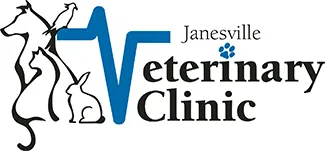Dental care is different for pets than it is for humans in a number of ways. Over 80% of dogs and cats develop periodontal disease in their lifetime. While humans are susceptible to this too, the ability to vocalize symptoms helps with earlier intervention. Since pets don’t speak “human,” they can’t tell us when they have a toothache.
Periodontal Disease? What’s That?
Periodontal Disease is just a fancy way of saying “advanced gum disease.” The problem is that it usually takes place under the gumline where it’s not visible. This means that your pet’s teeth can look perfectly healthy, but there can be bacteria hiding under the gums that can only be seen with digital x-rays.
If left to fester, the bacteria from periodontal disease can affect your furry family member’s cardiovascular and respiratory symptoms and may even lead to diseases related to the heart or lungs.
If left to fester, the bacteria from periodontal disease can affect your furry family member’s cardiovascular and respiratory symptoms and may even lead to diseases related to the heart or lungs.
Why Does My Pet Need to be Anesthetized?
While humans understand that dentals are a “means to an end,” pets do not. They won’t sit patiently with their mouths open while we clean and scale their teeth. Anesthesia also allows your pet to rest pain-free throughout the entire procedure, which could include tooth extractions.
Dental x-rays give us the full story!
Another reason anesthesia is necessary is that we need to take x-rays, as 60% of a tooth is below the gum lines. Visibly, your pet’s teeth can look shiny and healthy, but in reality, there could be retained roots, fractures, or periodontal disease lurking out of sight.
Since we’re adamant about giving your pet the very best here, we use digital radiographs because the image quality is much better, which means fewer retakes and less radiation exposure for your pet.
Since we’re adamant about giving your pet the very best here, we use digital radiographs because the image quality is much better, which means fewer retakes and less radiation exposure for your pet.
Our Pet Dental Protocols are the Cat’s Meow!
We understand that anesthesia can be nerve-wracking for you as a pet parent, but since we’re AAHA accredited, you can count on us taking extra safety precautions!
We do a blood draw before your pet’s dental to check for underlying issues with the liver, kidneys, etc.
Every dental patient is intubated using a properly placed breathing tube during general anesthesia, which protects the trachea and prevents aspiration of water and oral debris.
We have a state of the art “warming device” to keep your pet comfortable and monitor his/her body temperature during the procedure.
An IV catheter during your pet’s dental allows us to keep your pet hydrated during the cleaning, to keep their blood pressure moderated, and to flush the kidneys and liver of the anesthetic medications.
Your pet’s heart rate, breathing, blood oxygen levels, and temperature are constantly monitored by a dedicated veterinary technician the entire time.
Cues that a Dental Exam is Time Sensitive:
While routine dental cleanings are advised, there are times when your pet can’t wait. There aren’t always visual cues that there are issues below the gumline, but sometimes these symptoms appear:
Excessive drooling
Bad breath
Broken or missing teeth
Swollen or bleeding gums
Changes in chewing habits (dropping food, sudden disinterest in chew toys)
Pawing at the face
Obvious pain when touched near the mouth area
If your pet is presenting these signs, we’ll want to evaluate your pet ASAP to see if they need a dental exam. We don’t want them enduring pain and discomfort any longer than necessary.
You want your pet to enjoy a long, healthy life, and so do we! Let’s work together to improve the odds by staying on top of your loved one’s dental health.
You want your pet to enjoy a long, healthy life, and so do we! Let’s work together to improve the odds by staying on top of your loved one’s dental health.
